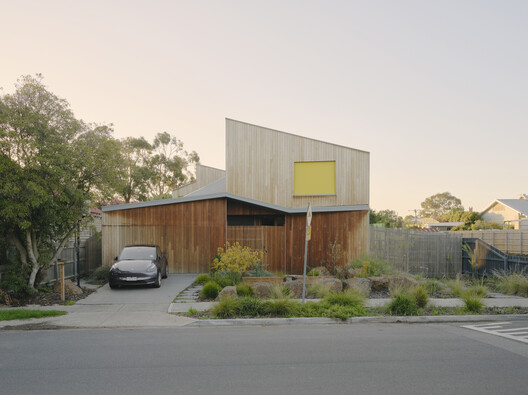Architectural philosophy and design methodology
Steffen Welsch Architects have explored the fundamental aspects of contemporary family living through Cloud Street, developing a dwelling that emphasizes both connection and shelter. This Northcote gem transcends being merely a house—it represents a thoughtfully crafted response to the dynamics of family movement, interaction, and growth.
The design prioritizes flow, featuring open-plan areas that stimulate movement and engagement while also creating necessary quiet zones for solitude. Abundant natural light floods in from various directions, reflecting off warm wooden finishes and soft, neutral shades that envelop the space in a comforting embrace.
A notable feature is how the residence interacts with its surroundings. The architects have masterfully balanced openness and privacy, with a layout that integrates the outdoors while shielding residents from the busy rhythm of suburban life. Ample glazing and smart sightlines ensure the garden acts not merely as a backdrop but as a vital component of the living experience.
Let’s also highlight that roofline—angled perfectly, it dances with light and shadow throughout the day, giving the house a lively, evolving character. It pays homage to suburban architecture with a modern twist, demonstrating that effective design can make a subtle yet powerful statement.
At its essence, Cloud Street is about crafting a residence that transforms alongside its inhabitants. It’s more than just a space to live; it’s a sanctuary for thriving, adapting, and cherishing the everyday moments that define family life. Intelligent, considerate, and sprinkled with a touch of style—this is architecture that truly comprehends the realities of living.
Eco-friendly characteristics and family-centric environments
Cloud Street isn’t merely aesthetically pleasing—it boasts impressive eco-friendly credentials as well. Here, sustainability is not an afterthought; it’s integrated into the design, ensuring that the home minimizes its ecological footprint while providing year-round comfort.
Passive design strategies are at play, with careful orientation, insulation, and cross-ventilation working harmoniously to maintain a naturally cool home in the summer and a cozy atmosphere in the winter. There’s no need to rely heavily on air conditioning when your house does the hard work for you. High-performance windows and substantial eaves help stabilize temperatures, while well-placed openings invite breezes to circulate like nature’s own cooling system.
Materials were selected with a focus on longevity and sustainability—consider recycled timber, low-VOC finishes, and responsibly sourced components that not only enhance visual appeal but also reduce environmental consequences. The home’s energy efficiency is further enhanced by solar panels and a rainwater collection system, making it as autonomous as possible within an urban landscape.
However, sustainability extends beyond energy efficiency—it’s about designing a home that adapts alongside its residents. Cloud Street’s versatile spaces allow for adjustments as family needs evolve, eliminating the necessity for significant renovations. Whether it’s a play area for children, a peaceful study corner, or additional living space for growing teenagers, the design facilitates effortless changes.
Exterior spaces receive the same thoughtful consideration as the interiors. A vibrant garden envelops the home, not only offering a visual retreat but also serving as a functional extension of the living spaces. There’s space for vegetable gardens, areas for children to play freely, and ample shaded spots for leisurely summer afternoons outdoors. It’s a residence that doesn’t merely occupy its lot—it embraces it.
Ultimately, Cloud Street demonstrates that sustainable design and family-oriented living are perfectly aligned. It’s intelligent, effective, and designed for durability—exactly what a well-crafted home should embody.
